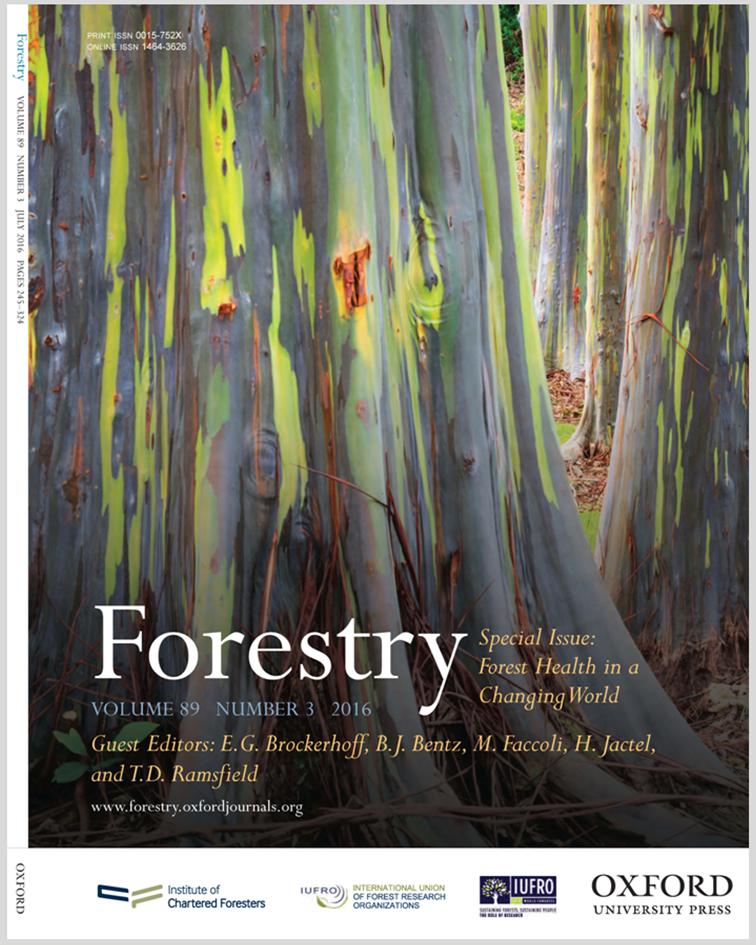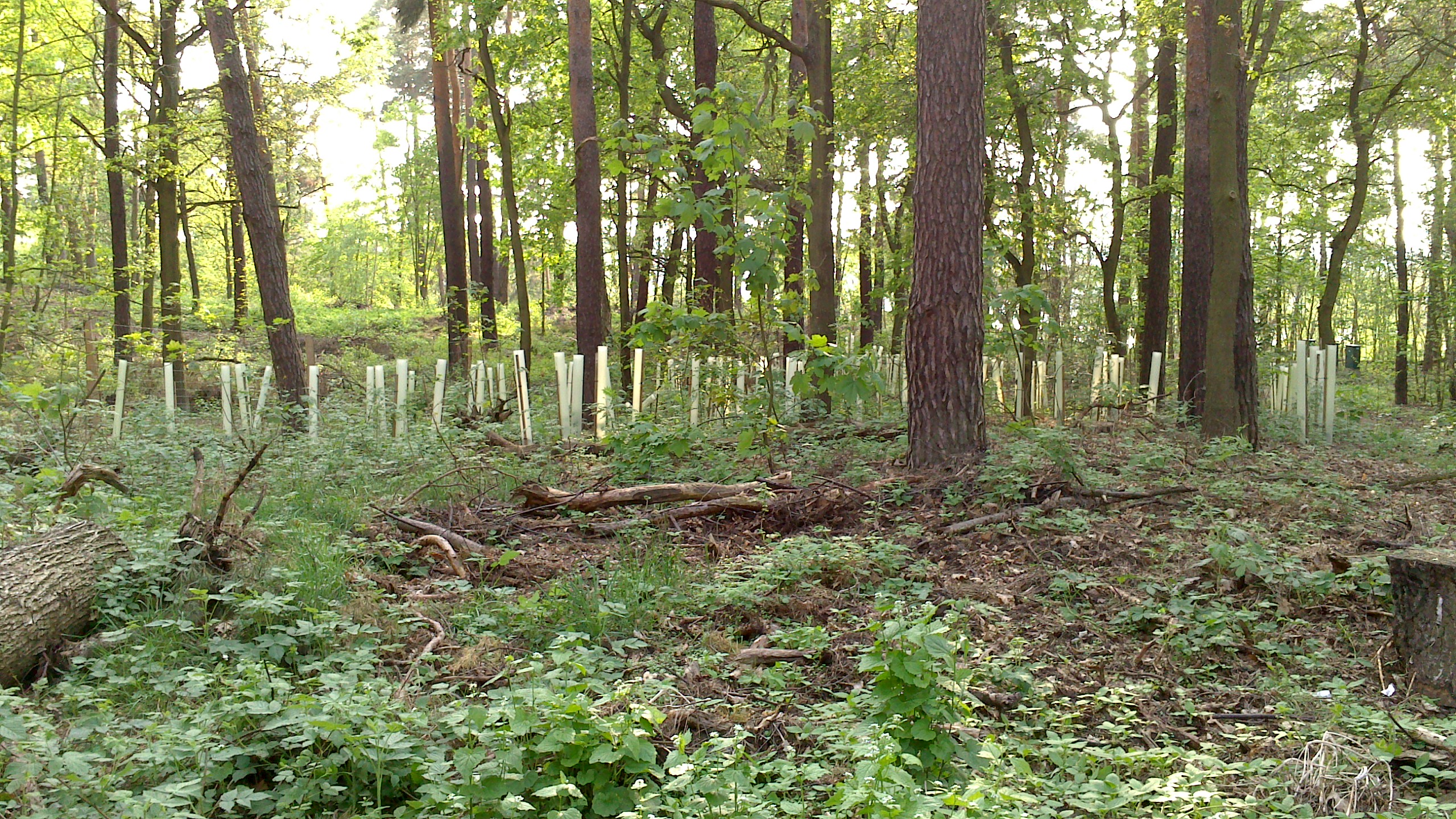“Harnessing Synergies between Agriculture and Forest Restoration’
“Harnessing Synergies between Agriculture and Forest Restoration’
Communities work together to restore forests – an example from Nepal
By Lila Nath Sharma, PhD
Blog from IUFRO Member Organization ForestAction Nepal
Jalthal forest is a 6,000 ha forested land in the densely populated region in the lowland of Southeastern Nepal. It is a remnant moist tropical forest with diverse ecosystems and habitats comprising swamps, rivers, ponds, hillocks and plain areas. It is an important biodiversity hotspot with several threatened floras and faunas including the Asiatic elephant and pangolin. The forest has unique assemblages of tropical and subtropical plant species found in the sub Himalayan tract. Floristic elements from different bio-geographical regions – Sino Himalayan, East Asian and Indian, for example – makes the forest diverse and unique.
The forest is an important source of environmental services including fresh water and multitudes of forest products for people living around the forest. It is currently managed by 22 Community Forest User Groups (CFUGs) and is an important livelihood source for over 80,000 people. In spite of high ecological and social significance, the Jalthal forest is subjected to multiple pressures. These include invasive species, human-wildlife conflict (particularly human-elephant), wildlife poaching, illegal felling of trees and timber focused forest management.
Read more…The Future of Forests and Forestry in Asia and the Pacific
A report from the partner event on the opening day of the 27th Session of the Asia-Pacific Forestry Commission by Dr Michael Kleine, IUFRO Deputy Executive Director
The 27th Session of the Asia-Pacific Forestry Commission, taking place at the Bandaranaike Memorial International Convention Centre, Colombo, Sri Lanka from 23-27 October 2017, started with a partner event on the future of forests to be assessed in the forthcoming 3rd Asia-Pacific Forest Outlook Study “The future of forests and forestry in Asia and the Pacific: The path to 2030 and beyond”. Read more…
On Forest Health
IUFRO All-Division 7 Meeting at the 125th Anniversary Congress
An Interview with Division 7 Coordinator Eckehard Brockerhoff of Scion (New Zealand Forest Research Institute)
——– Read more…
IUFRO Spotlight #38 – Climate Change and Invasive Alien Species Worsen Outlook for Forest Health

As global trade has expanded, there has also been an accompanying increase in invasions of insects and pathogens into areas where they never before existed.
In many cases these invasions have caused significant forest damage, negative economic impacts and loss of forest ecosystem services.
Meanwhile, climate change is affecting the geographic distribution of host trees and their associated insects and pathogens. Increased pest impacts – both native and alien – can be expected.
Congress Spotlight #20 – The climate’s changing: So should forest management
The climate’s changing: So should forest management

In Berlin, the capital city of Germany, a comprehensive program of converting pine stands into close-to-nature mixed forest is being implemented, thus making the forest more resilient to future climate change effects, for example. (Photo by IUFRO)
As a joke, people used to say: “If you don’t like the weather, just wait a minute. It’ll change.”
Now they say that about the climate – but they’re a lot more serious.
The rapidly changing climate will precipitate related changes throughout nature. And that includes the world’s forests.
Anticipating climate change impacts on forests and adapting policies and management strategies to mitigate those impacts is critical to maintain the health of those forests and, by extension, of the earth.
“Forest management for adaptation to climate change” is the theme of a session being presented at the 24th IUFRO World Congress in Salt Lake City this fall, by Drs. Rodney Keenan of the University of Melbourne, Australia; Carina Keskitalo of Umeå University, Sweden; Kalame Fobissie of the World Wildlife Fund Central Africa, Cameroon; and Guangyu Wang of the University of British Columbia, Canada.
Congress Spotlight #19 – ‘Citizen science’: A way to fight invasive species?
‘Citizen science’: A way to fight invasive species?

At Shelley Beach, a few miles North of San Francisco, tanoaks and oaks, the most sacred trees to native people of the Northern California coast, have been decimated due to the exotic disease known as Sudden Oak Death (SOD). SOD is thus not only changing the landscape dynamics but also profoundly altering the local culture. (Photo by Matteo Garbelotto)
Invasive species are a threat to forest ecosystems around the world.
No surprise there.
Thousands of invasive flora and fauna have been transported – sometimes by accident, sometimes by design – to different continents and countries. Very often their impact is detrimental to their new region.
But, usually when one thinks of the negative impacts of invasive species, top of mind would be the effect on the economy – for instance, phytophthora dieback, an Asian import, affects the economically important jarrah tree in Australia. Or perhaps one would think of environmental damage, such as the destructive swath cut through the forests of Tierra del Fuego by imported North American beaver, to give just two illustrations of unwanted economic/environmental results.
IUFROLAT III Session Highlights: Threats to Forest Health
Threats to Forest Health – Forest Pests and Diseases, Biological Invasions, Air Pollution and Climate Change
For more information on IUFRO Division 7 Forest Health: http://www.iufro.org/science/divisions/division-7/
The papers presented in this session addressed the relationship between changing climatic conditions and biotic factors such as bark beetles and wasps causing forest health problems of various degrees.
One paper highlighted present and projected changes caused by interactive impacts of increasing temperatures, ground-level ozone, nitrogen deposition, and CO2 on forests growth and soil and water processes in south-western and northern forests in the United States. These changes may predispose forests to altered water regimes, biodiversity insect attacks, wind-throw, frost damage and catastrophic fires.
Other presentations highlighted the effects of insects on forests in Northern and Central America. Generally, the number of severe outbreaks is increasing, but little is known about the causes of these calamities. Recent research clearly indicates, however, that several earlier benign insect species show damaging outbreaks because of increased stress on the ecosystem. Range expansions of e.g. bark beetle could also be observed and appear to be closely linked to changing climatic conditions.
A cost-benefit analysis of surveillance of ash borer population which is rapidly spreading in many regions due to international trade is worthwhile and cost-effective. Using bio-economic modeling on surveillance trapping helps to optimize surveillance and eradication programs. Given the increasing frequency and severity of insect outbreaks in Northern America continuous surveillance of invasive wood borers and bark beetles is also recommended for Latin America.
Presentations in this session:
Interactive effects of air pollution and climate change on forests in the United States (Andrzej Bytnerowicz, USDA Forest Service, USA)
Sirex noctilio in Argentina: What we know and still need to know to manage populations successfully (Juan Corley, Argentina)
A cost-benefit analysis of surveillance for invasive wood borers and bark beetles (Eckehard Brockerhoff, IUFRO Division 7 Coordinator, Scion, New Zealand)
Evaluation of mortality in natural stands of Pinus ocarpa an P. caribeae in Nicaragua (Lori Eckhart, Auburn University, USA)
The bark beetle outbreaks of Western North America (Christopher Fettig, Pacific Southwest Research Station, USA)
Second Session: Threats to Forest Health: Forest Pests and Diseases, Biological Invasions, Air Pollution and Climate Change
The main focus of the session was the impact of invasive species on forests and solutions for tackling these problems. Examples were given from different countries and continents including the US, South Africa, Argentina and New Zealand. Solutions are various and obviously depend on the respective case.
Common issues related to globalization and its impact on forest health were raised by all speakers. Live plant material, including seeds, have been implicated in many cases as pathways for invasions of alien pests and pathogens of forest trees and other plants. Solving this problem is difficult because many plants may be asymptomatic and infected plants may thus be difficult to exclude. Answering specific research questions, such as what type of organisms invade from where and related aspects, are required to allow informed decision-making. These are complex problems that require application of newest technologies and also require broad international collaboration.
Actions taken for integrated pest management include education of students, companies, pupils; communication with all stakeholders and the inclusion of locals in monitoring activities. Last but not least, training, early research including close collaboration and teamwork, the maintenance of quarantine facilities are keys to success.
It was recognized that in many countries, there is not good communication between forestry researchers and plant quarantine agencies that hold the responsibility for solving these problems. The group also concluded that the problem of biological invasions is perhaps not adequately recognized by the forestry research community, including within IUFRO. This suggests that there remains a need to educate the broader research community on the importance of this issue.
Presentations in this session:
Invasions by non-indigenous forest insects and diseases in the US (Andrew Liebhold, US Forest Service, USA)
Continuing spread of plantation pests and pathogens – is there a solution? (Jolanda Roux, University of Pretoria, South Africa)
Advances in IPM of a key pest of poplars in Argentina, Megaplatypus mutates (Mariana Moya, Universidad de Buenos Aires, Argentina)
Successful forest protection is a multifaceted endeavour (Tod Ramsfield, Natural Resources Canada)
